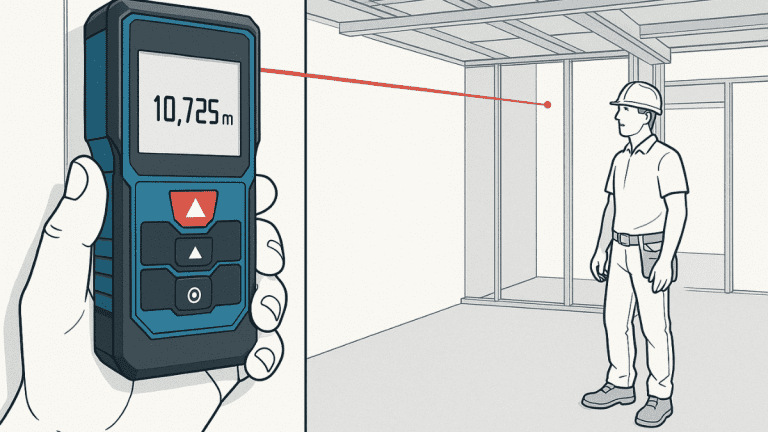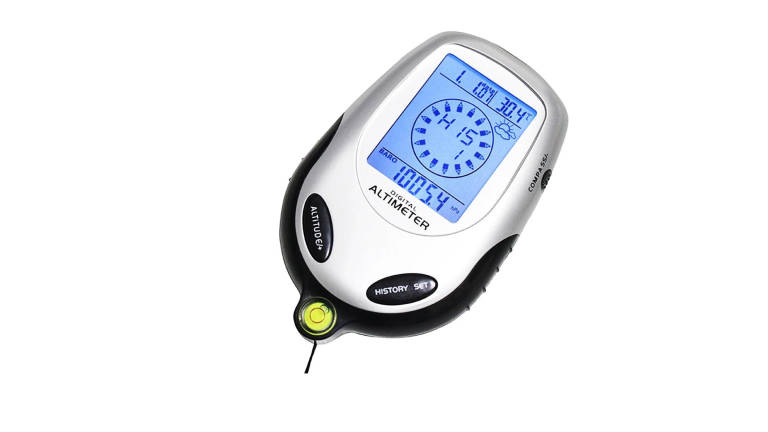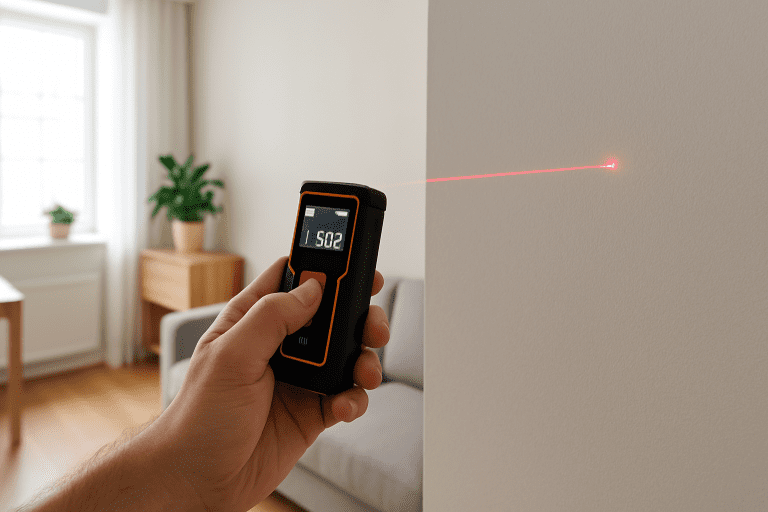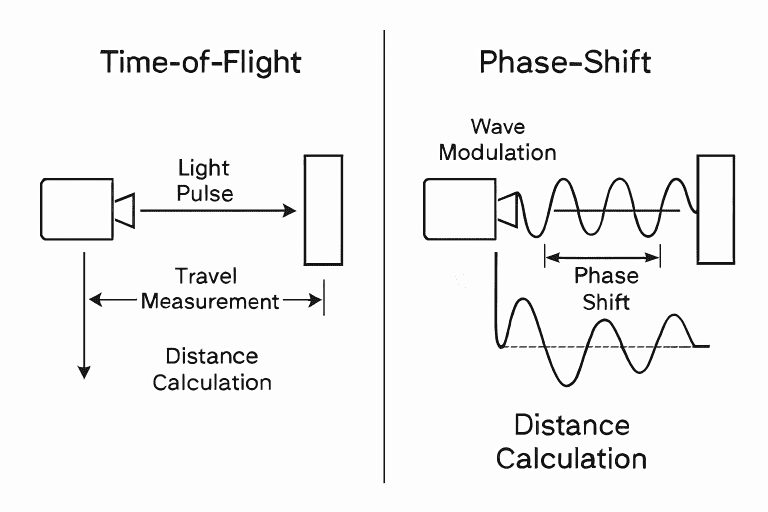
When it comes to ensuring the quality and durability of coatings, few tools are as indispensable as a paint thickness gauge. Whether you’re a meticulous auto detailer inspecting a car’s refinished surface, a discerning car enthusiast scrutinizing a new paint job, or a dedicated paint professional ensuring coating compliance in an industrial setting, this tool is a non-negotiable part of your toolkit.
This guide delves into the practical aspects of paint thickness gauges, equipping you with the knowledge you need to make the most of this essential tool. From understanding the different types and popular models to mastering calibration procedures and tips for practical use, this guide is your key to unlocking the full potential of paint thickness gauges.
What is a Paint Thickness Gauge?
Definition and Purpose
A paint thickness gauge is a precision instrument used to measure the dry film thickness (DFT) of coatings applied to a substrate. Essentially, it tells you how thick the layer of paint, powder, or protective coating is, ensuring it’s within the acceptable range for proper performance and appearance.
Importance in Quality Assurance
Accurate coating thickness is critical for quality assurance across industries. It ensures:
- Performance Durability: Too thin, and the coating may fail to protect against corrosion or wear. Too thick, and it may result in bubbling, cracking, or waste.
- Cost Efficiency: Ensures no excess material is applied, reducing waste.
- Compliance: Many industries, from automotive refinishing to aerospace manufacturing, have strict coating requirements to meet safety and regulatory standards.
Types of Paint Thickness Gauges
Mechanical Gauges
Mechanical gauges are traditional and robust tools. They rely on analog systems like springs and permanent magnets to measure coating thickness. They are durable and simple, making them ideal for harsh environments.
Advantages:
- Cost-effective and durable.
- No batteries are required.
Limitations:
- Limited precision compared to digital gauges.
- Requires manual calibration and careful handling for accurate results.
Digital Gauges
Digital gauges are more advanced, using modern electronic components to deliver fast and precise measurements.
Benefits:
- High accuracy and ease of use.
- Built-in calibration features and advanced data recording options.
- Sleek interfaces with large digital displays.
Limitations:
- Requires a power source (batteries or chargers).
- Higher cost compared to mechanical gauges.
Key Differences Between Mechanical and Digital Gauges
- Accuracy: Digital gauges are generally more reliable for precise measurements.
- Ease of Use: Digital models are user-friendly, with intuitive displays and automated settings.
- Durability: Mechanical gauges withstand harsh environments better.
Popular Paint Thickness Gauge Models
Elcometer 415 Industrial Paint & Powder Thickness Gauge
- Use Case: Ideal for industrial applications involving powder-coated surfaces.
- Key Features:
- Measures both flat and curved surfaces.
- Non-destructive testing with excellent accuracy.
- Performance Insight: Trusted in aerospace, construction, and heavy machinery industries for ensuring coating compliance.
Elcometer 311 Automotive Paint Meter
- Use Case: Specially designed for automotive coatings.
- Key Features:
- Compact and lightweight design.
- Provides detailed measurements for identifying paintwork touch-ups or inconsistencies.
- Performance Insight: Widely used by auto detailers and collectors assessing pre-owned vehicles.
Underlying Technologies in Paint Thickness Gauges
The excellent part about these tools is the technology hidden inside them. A few cool science tricks help them do their job perfectly.
Permanent Magnets
Some paint thickness gauges use permanent magnets to hold the device steady against metallic surfaces. This is especially useful when measuring cars or metal structures. Magnets add stability and accuracy to the reading.
Electromagnetic Induction
Electromagnetic induction is another neat science trick used in some gauges. When the gauge is near a metal surface with a paint layer, it creates a small magnetic field that helps measure the thickness. This method is known for its high reliability.
Eddy Currents
Eddy currents are like little whirlpools created in a metal by an electrical field. In a paint thickness gauge, these currents help determine the thickness of the paint layer in a non-contact way. It is incredible how a simple scientific concept turns into a practical tool.
Measuring Techniques for Dry Film Thickness
How Gauges Measure Dry Film Thickness
The process starts when the device is placed on the coated surface. The paint thickness gauge uses one of the technologies we talked about to measure the layer of paint without touching the paint directly. Think of it as feeling the thickness of a blanket without pulling it away.
The gauge sends signals through the paint layer, and by analyzing how the signals change, it calculates the thickness of the paint in excellent detail. This helps measure dry film thickness, which is crucial for areas that need strong protection.
Applications in Different Industries
There is now a wide range of industries that rely on paint thickness gauges. Here are a few examples:
- Automotive Industry
In car manufacturing and repair, a paint thickness gauge ensures that every part of the vehicle gets the right amount of paint. This not only makes the car look good but also protects it from corrosion and damage. - Industrial Coatings for Factories
Factories often use these devices to check that heavy machinery and large structures are adequately coated. This helps in maintenance and prevents premature wear. Research has shown that proper coating can extend a machine’s service life by nearly 20% (Reference: Industrial Maintenance Magazine). - Marine and Aerospace
Ships and airplanes face extreme weather conditions. Here, a painted surface is the first line of defense. Using a paint thickness gauge in these industries ensures that every part of the vehicle is protected against rust and harsh environmental factors.
Accuracy and Precision in Thickness Measurement
Accuracy is key when working with a paint thickness gauge. Let’s talk about what this means and how precision is achieved.
Defining Accuracy in Measurement
Accuracy means how close a measurement is to the actual value. When a paint thickness gauge shows a number, it should really reflect the exact thickness. In my experience, a 2% error can make a big difference in quality.
Impact of Accuracy on Reliability
Imagine if your drawing was slightly off and every mistake added up. That is what happens when a measurement tool is not accurate. Good accuracy ensures that the coating is reliable, lasts longer, and avoids issues like peeling or bubbling.
Calibration of Paint Thickness Gauges
You might wonder how the device stays accurate over time. The answer is calibration.
Importance of Regular Calibration
Just like a clock needs to be set, a paint thickness gauge needs periodic calibration. This process checks the tool against known standards to ensure it gives correct readings. Experts say that regular calibration can reduce measurement errors by 15-20% (Reference: Coating Standards Review).
Using Coating Thickness Standards
Standard reference materials in coating thickness measurement help technicians know when the gauge is off. These standards act like a ruler. They are vital for proper calibration and ensuring that the tool remains reliable.
Step-by-Step Calibration Process
Here’s a simple way to understand the calibration process:
- Pre-Calibration Check: Make sure the gauge is clean and free of damage.
- Setting a Standard: Use a piece of material with a known thickness.
- Adjusting the Gauge: Follow the manufacturer’s instructions to adjust the gauge until it matches the known value.
- Final Testing: Test again on a second standard to verify accuracy.
This process might sound a bit technical but think of it as resetting a video game after a long session to ensure that everything is still fun and fair.
Testing with Paint Thickness Gauges
It is important to test the gauge in real-world conditions after calibration. I’ve seen many technicians perform simple tests before starting work.
- Pre-Testing Preparations
Before you start, ensure the surface is clean and dry. Dust or moisture can change the reading. It is like checking that your shoes are tied well before a long walk. - Factors Affecting Measurements
Several things can affect the measurements, such as:
- Temperature changes
- Humidity in the air
- Surface roughness
If not accounted for, these factors can sometimes cause a 5-10% drift in readings. It is always good to note the environment before starting the work.
Tips for Effective Use of Paint Thickness Gauges
Tips for Effective Use in Various Conditions
- Keep the Device Clean: Wipe it often to avoid dirt buildup.
- Store it Properly: Keep it in a dry box or case to avoid damage.
- Practice: Like any tool, practice makes perfect. Use it on sample surfaces to get a feel for its operation.
- Regular Calibration: As we discussed, calibration is key to maintaining accuracy.
Best Practices in Diverse Conditions
Be extra cautious when working in very cold or warm environments. I once worked on a project where the temperature dropped suddenly. The readings changed slightly, and I had to adjust my approach. Keeping an eye on the factors affecting measurements helped me get back on track.
Another good practice is to consult the manufacturer’s manual for any condition in which the gauge might be used. This ensures that you are following best practices in diverse conditions.
Elevate Your Quality Control with a Paint Thickness Gauge
From automotive coatings to industrial applications, paint thickness gauges are indispensable for maintaining quality, performance, and compliance. Whether you’re a detailer, a professional painter, or a quality control expert, mastering the use of these tools will set you up for success.
Need help choosing the best gauge for your needs? Contact us today for personalized recommendations or in-depth support!


